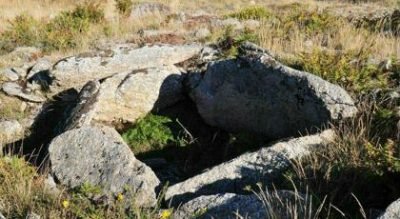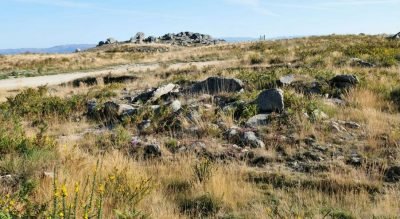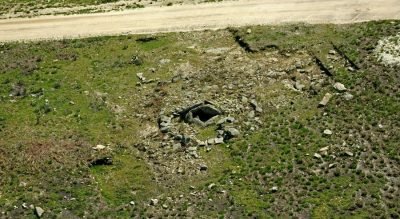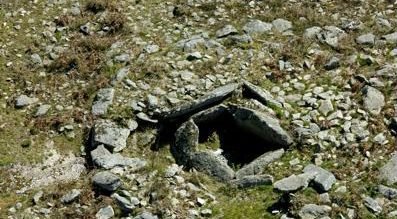The monument is implanted in the periphery of a great tea with about 930/940 meters of altitude, being part of the Megalithic Nucleus of Outeiro de Gregos. The site was operated by Vítor Oliveira Jorge, and an excavation campaign was carried out in 1980.
According to what is suggested in the bibliography consulted it is a type monument CAIRN with a closed cystoid chamber, of polygonal and decentered shape. Five steles were identified, four of which were in situ, and their shoring was made by slabs with dimensions larger than those delimiting the chamber.
The tumulus had a sub-elliptical form about 6 / 7.2 meters in diameter, consisting of slabs and stony blocks arranged in a sometimes chaotic form, being found to close this heap of stones a locking ring constituted by elements large stones.
Around the tumulus was also identified a horizontal slab and a peripheral structure composed of two slabs embedded in the ground that delimit a space filled with small stones and a rectangular structure.
In 1996 a new slab of this rectangular structure was identified that motivated the realization of new archaeological excavations.
















